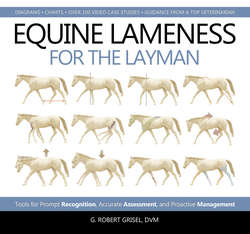Читать книгу Equine Lameness for the Layman - G. Robert Grisel DVM - Страница 38
На сайте Литреса книга снята с продажи.
6 The Issue of Visual Subjectivity Among Observers
ОглавлениеThe issue of visual subjectivity has become a hot topic in the field of equine-performance medicine. Despite our attempts to “standardize” lameness assessment (via the use of various grading systems), research suggests that veterinarians do not always agree on the location or severity of lameness based on visual impression alone.7,8 This is primarily why advanced diagnostic imaging techniques and motion-sensing devices have become more popular in recent years.
None of us will observe lameness in exactly the same way, just as none of us views artwork identically. Even so, a wealth of information is both visibly expressed by the lame horse and available to the acute observer. Forfeiting this vital information solely based on our inability to agree with one another is a mistake, in my opinion.
Despite having different strategies for building a jigsaw puzzle, for example, multiple individuals within a group still have a good chance of successfully completing the project. Each may have their own set of self-imposed rules and strategies, which may or may not parallel those of other individuals. For instance, some might start by separating the edges from the inside pieces, finding it is easier to work from the outside inward. Grouping pieces of similar design and color may also help to facilitate completion of certain portions. Others will make use of the picture on the box as a guide. Many of us sort pieces by appearance, whereas another group might use the shape of the pieces to determine their location. Although the knowledge of general puzzle-building concepts would be helpful to all of the individuals, all will find the specific method that works best for them. And in the end, everyone completes the same puzzle successfully.
It is important to realize that multiple observers formulating a multitude of visual impressions still have the ability to reach common conclusions when it comes to the location, degree, and nature of a horse’s lameness. Our visual perceptions, if carefully codified, can only facilitate and accelerate the process of accurate diagnosis.
In summary, don’t worry if you don’t see what others see. It is not important that we all agree on what we perceive, but rather that we reach similar conclusions. Use your own “built-in” detection hardware to find the alterations in movement that will steer you in the right direction. The important thing is that we glean as much as possible from the visual exam before moving forward.
